This site is part of various affiliate programs. Links may give us a small compensation for any purchases you make, at no additional cost to you. Please read the disclaimer policy for full details.
It’s not always possible to connect a Samsung TV to Wi-Fi without a remote, but this does vary depending on the model.
The cost-free way is to use an IR blaster app to connect to Wifi, then the Samsung SmartThings to control your TV, but the easiest way is to fix your broken Samsung remote or simply buy a cheap, generic remote.
It’s also possible to use your Samsung TV without a remote or Wi-Fi if it has previously been connected to a network by using your phone hotspot to mimic your old Wi-Fi network.
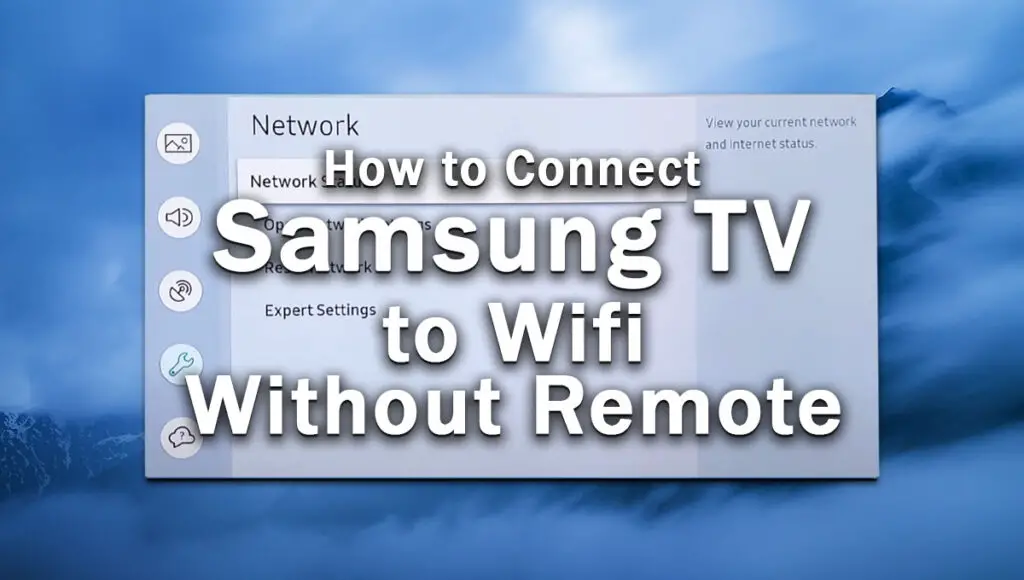
How to Connect a Samsung TV to WiFi Without Remote
| Method | Explanation |
|---|---|
| Use the Physical Buttons on Your TV | Every Samsung TVs has physical buttons on the side or rear. Use the Menu button and Channel +/- to navigate to Wifi settings if present. |
| Use a USB Keyboard or Mouse | Control your Samsung TV without a remote by using a USB keyboard / mouse on newer Samsung TVs. |
| Use Your Old Wifi Password and the SmartThings App | Connect your Samsung TV to new Wifi without remote by using a phone hotspot mimicking your old Wifi details and the SmartThings app to control your TV. |
| Use an IR Remote Control Phone App | Older Samsung TVs with IR receivers can be controlled with IR phone apps like Mi Remote App. |
| Use an Ethernet Cable | For older Samsung TVs, connect an Ethernet cable to get your TV onto your local network, then use the SmartThings app to setup Wifi. |
| Fix Your Existing Remote | Damaged Samsung remotes can often be fixed in just a few minutes. |
| Get a New Generic Samsung TV Remote | Generic Samsung remotes are available for less than $10. |
If you have moved house or changed your Wifi provider and lost your Samsung TV remote, then you should use your phone as a hotspot mimicking your old Wifi network, and the SmartThings app to control your TV over this hotspot.
If you’ve never connected your Samsung TV to Wi-Fi before, then you are more limited, and are probably best to buy a cheap generic remote, although you should try the steps below first.
1. Use Your Samsung TV’s Buttons
Older Samsung TVs do have physical menu buttons, but newer ones make do with a single button that opens an on-screen menu.
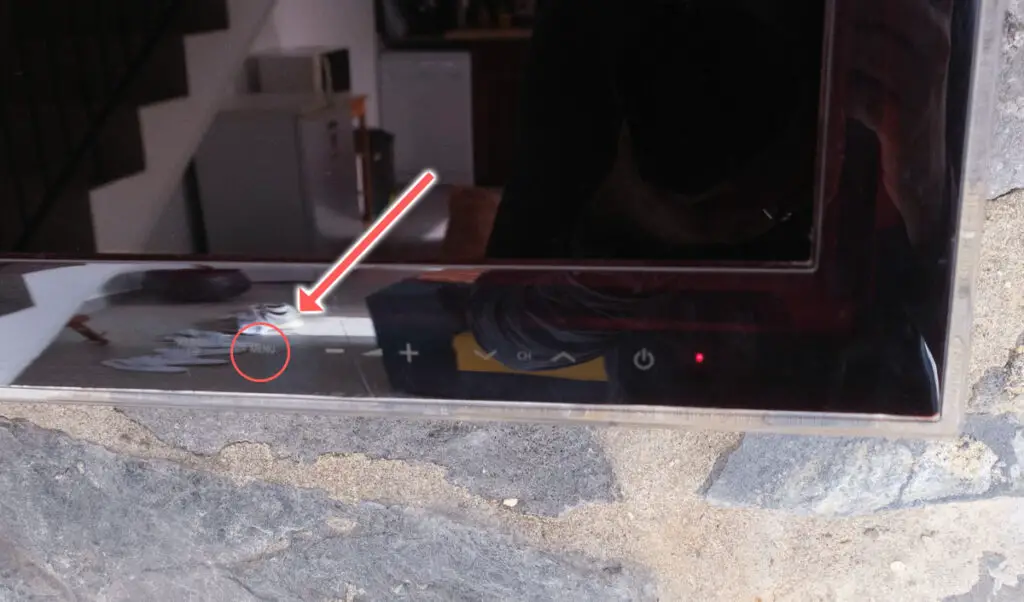
You will usually find the buttons on the right side when looking from the front or underneath your TV. Typically, if your button is on the bottom of the case, it’s just a simple single universal button which is unlikely to be of help.
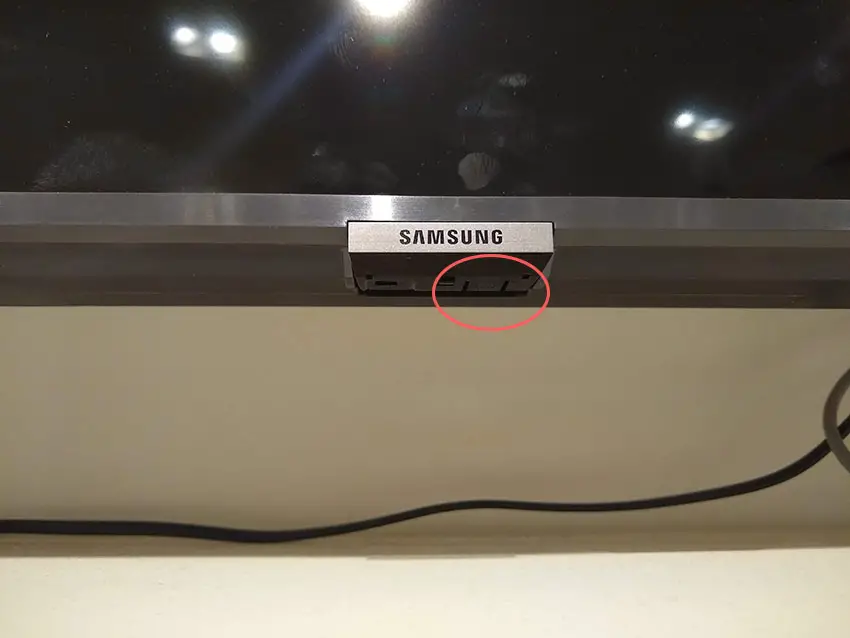
If your TV has a physical menu button, then use that to navigate to Settings -> General -> Network with the Channel + or – buttons to move your cursor.
If your TV has a single button as in the image above, then switch your TV on by long pressing this button, then short press the button to open the on-screen menu. If this shows a Settings option, then navigate to Network and set up your Wi-Fi using short presses of the button to move your on-screen cursor and long presses to select.
If your TV has a control pad with Up, Down, Left, Right and Power buttons, then switch your TV on and use a short press of the Power button to bring up the on-screen menu. Use the arrow keys to move your on-screen cursor and short presses of the Power button to select, and go to Settings and set up your Wifi.
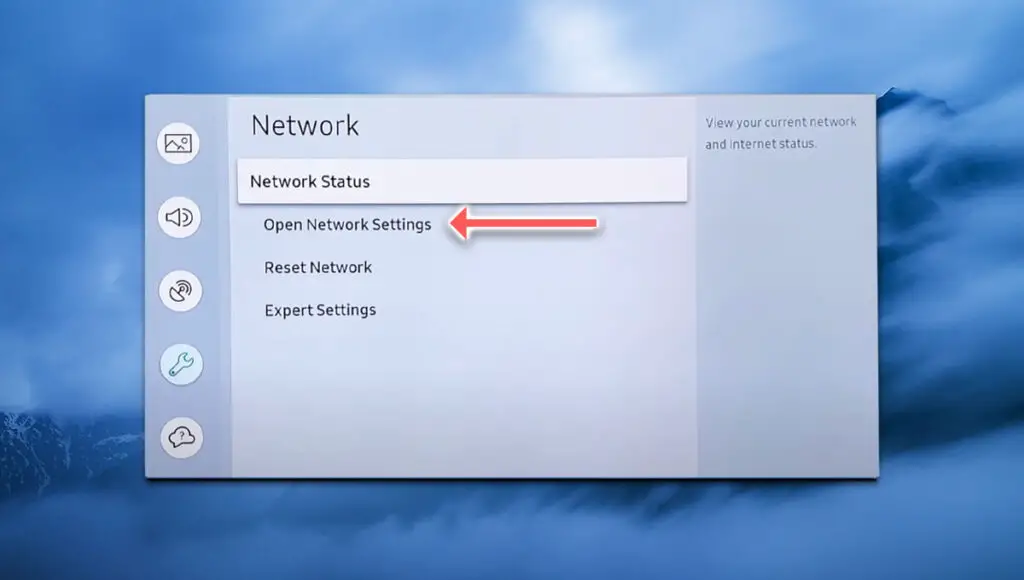
Once you have got your Wi-Fi setup, you can then use the SmartThings app to control your TV from your phone – download from the Google Play Store or iOS App Store. If you have a Samsung Galaxy phone, this will already be pre-installed.
2. Older Samsungs Can Use an Ethernet Cable to Connect to the Internet
A quick solution to get your TV connected to the Internet is to use a basic Ethernet cable to connect it to your router, although this will only work for older Samsung TVs.
Every router usually comes with an Ethernet cable, and if you haven’t used yours, you can probably find it in the box you stashed away after unpacking your router.
When older Samsung TVs have an Ethernet cable plugged in, they will auto-connect to the Internet and don’t require any further setup, although newer models require you to set this up via the on-screen menu, which needs a remote.
If you don’t want to leave the Ethernet cable in permanently, then once it’s plugged into your router, simply download the SmartThings App to your phone and you can use that to set your TV’s Wi-Fi.
Now remove the Ethernet cable and the Wi-Fi connection will kick in.
3. Use a Phone Hotspot to Mimic Old Wifi Details
This method is ideal if you have moved house or recently changed your Wi-Fi provider and can’t figure out how to change your TV’s Wi-Fi connection to your new network.
Note that this method will only work if your TV was connected to Wifi at some point in the past and you still know your old Wifi network’s password. (Your old network details should be saved on your phone).
The idea is to use your phone as a Wi-Fi hotspot that mimics your old Wi-Fi network so that your TV automatically connects to your phone. You then use the SmartThings app on the same phone to control your TV.
- First, download the SmartThings app from the Google Play Store or Apple App Store onto your phone using your existing Wi-Fi or mobile data.
- Then, set your phone to be a Wi-Fi hotspot using your old Wi-Fi network’s details.
- On Android, go to Settings -> Network and Internet -> Hotspot and tethering -> Wifi hotspot. Set the Hotspot name and Hotspot password to match your old Wifi details, that you previously used with this TV.
- On iPhone, you can do this in Settings -> Personal Hotspot as shown in this guide.
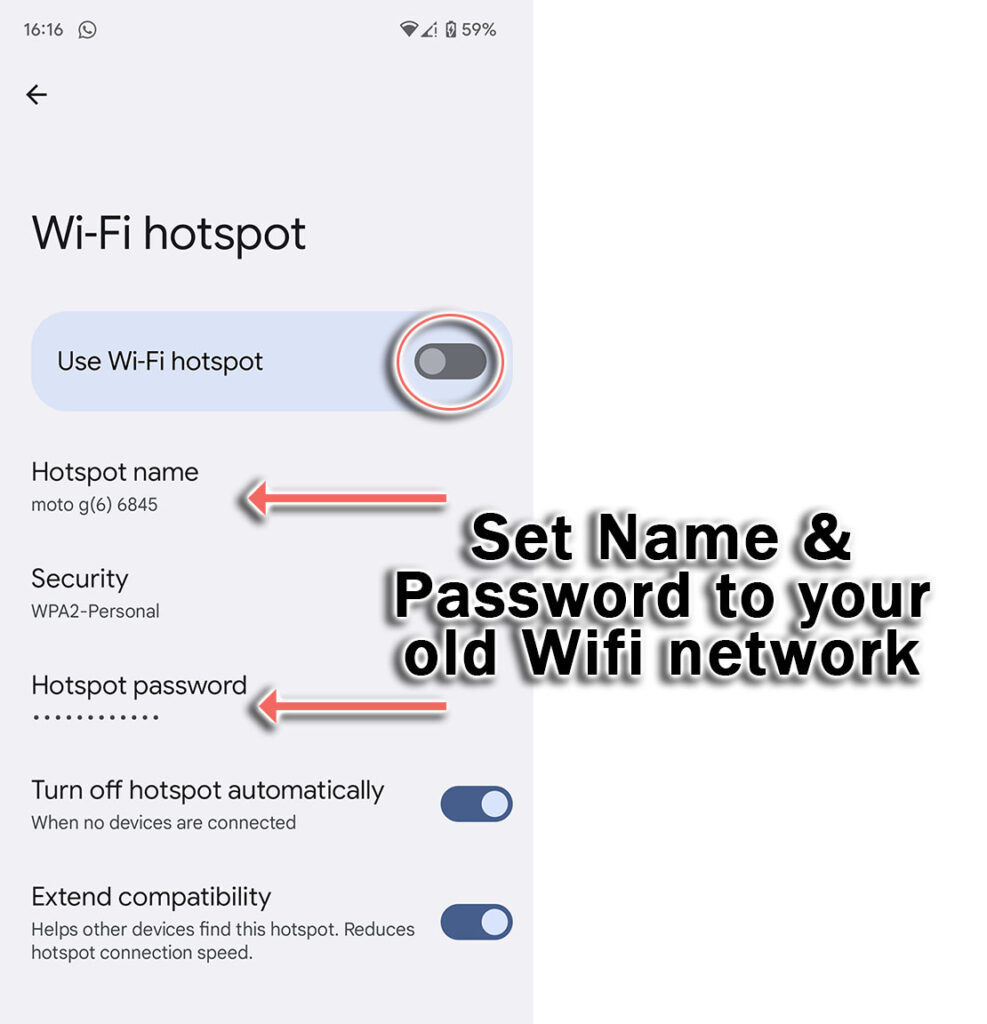
- Switch your TV on and it will connect to your phone’s hotspot, as your TV thinks this is your old Wi-Fi network.
- Open the SmartThings app on your phone, and if your TV has already been added as a SmartThings device, tap Menu, then All Devices and choose your TV.
- If your TV has not been added as a SmartThings device, then open the app, tap Devices -> Home -> + -> Add Device -> Scan Nearby and add your TV. A PIN will appear on your TV screen which you need to enter in the app.
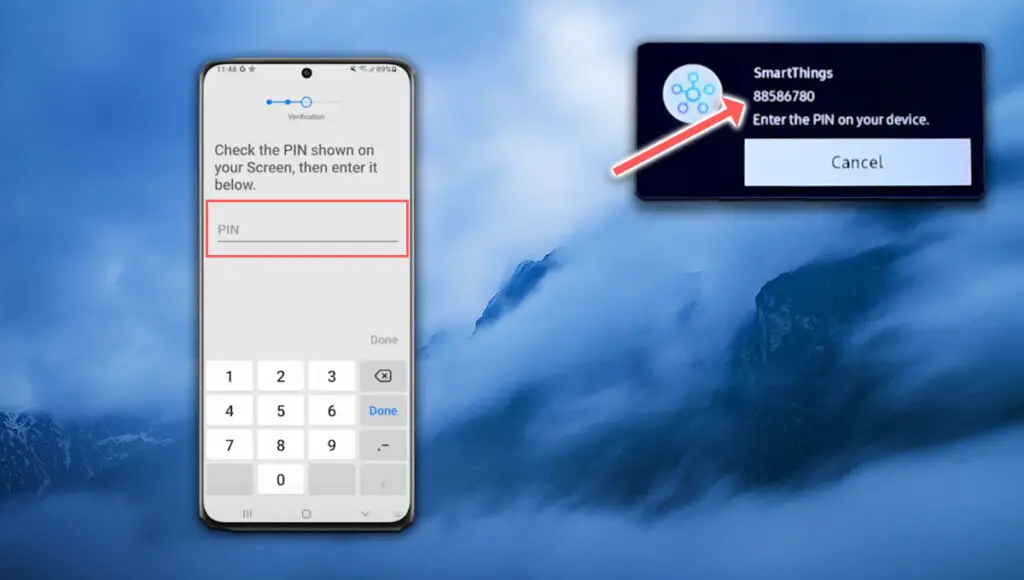
- You can then use the app to control your TV and connect it to your new Wi-Fi network via the settings page.
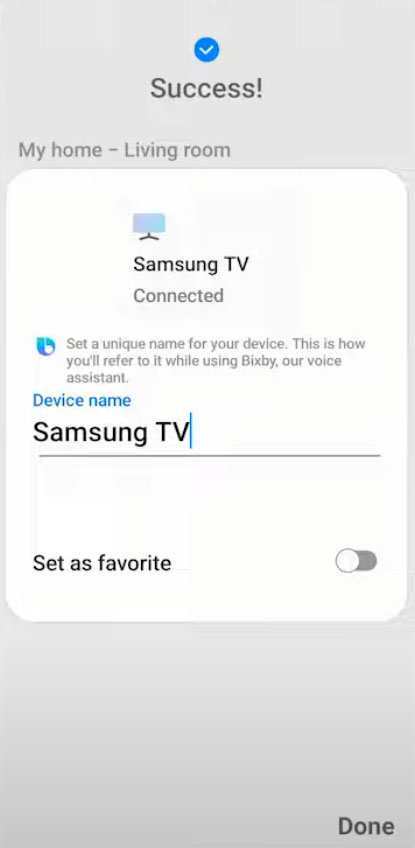
If you can’t find your TV within the app, then make sure that your TV is connected to your phone’s Wi-Fi hotspot.
The remote does not require an Internet connection to work, but you do need to be on the same local network.
4. Use an IR Blaster on Android Phones
If you’re struggling to get a connection between the SmartThings app and your Samsung TV, the Mi Remote app is a good alternative, as this doesn’t require a Wi-Fi connection to work and relies only on infrared.
Not all Samsung TVs support infrared remotes, so first check that yours has an IR receiver somewhere on the front.
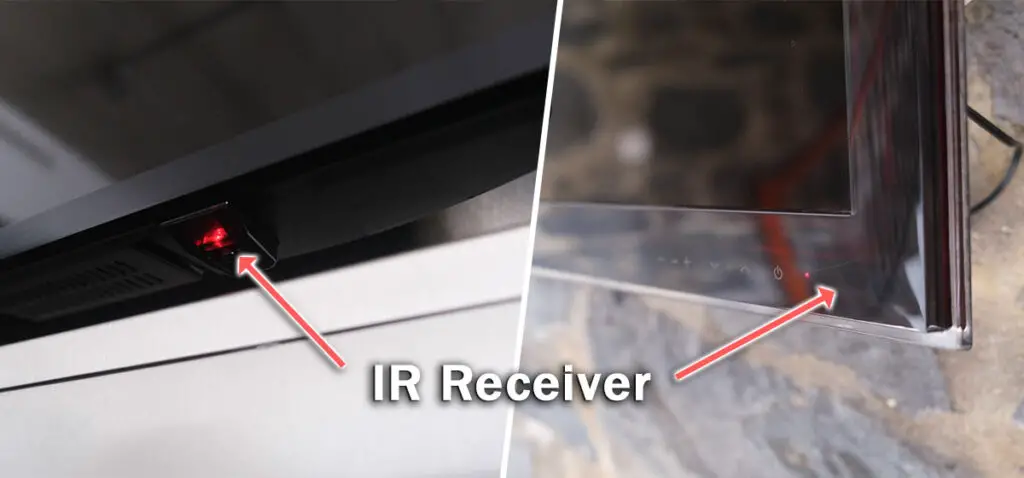
If you have an Android phone with an infrared function, then:
- Download the Mi Remote app and install it.
- Ensure the red standby light on your Samsung TV is on.
- Open the app and tap the TV option.
- Point your phone at your TV’s IR receiver and press the Power button in the app.
- You can then use the Menu button at the top of the app to access your TV’s Wi-Fi settings.
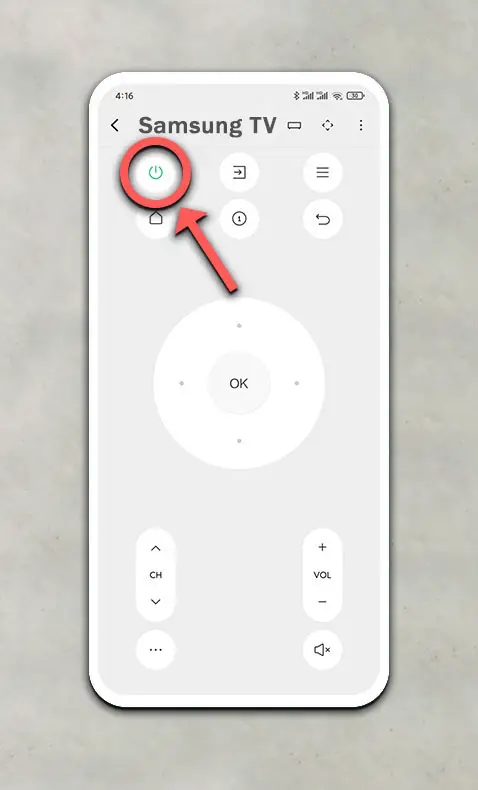
This sends an IR signal from your phone to the TV exactly the same as with a basic IR TV remote.
iPhones do not have IR blasters, so this method will not work for them unless you purchase a separate IR blaster dongle, but you’re probably better off buying a (cheaper) generic remote in this case.
5. Plug in a Wired USB Controller
Plugging a USB mouse or keyboard into the USB slot on the back of your Samsung TV is one of the easiest ways to access the on-screen menu and then connect your TV to WiFi, but this doesn’t work on all models.
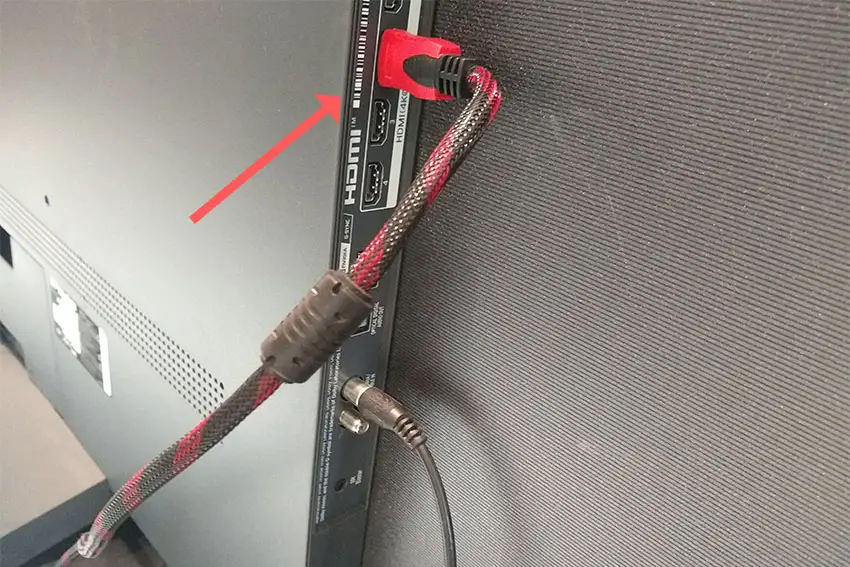
If your TV supports either one, it should auto-configure on plugging in your peripheral and tell you how to access the menu in a message on the screen.
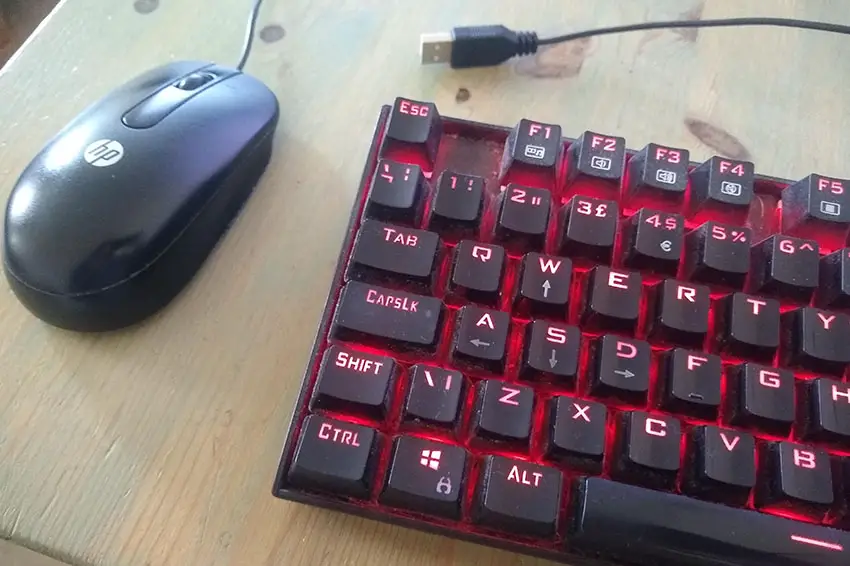
Then just go to Settings -> General -> Network and set up your connection.
6. Repair a Broken Samsung Remote
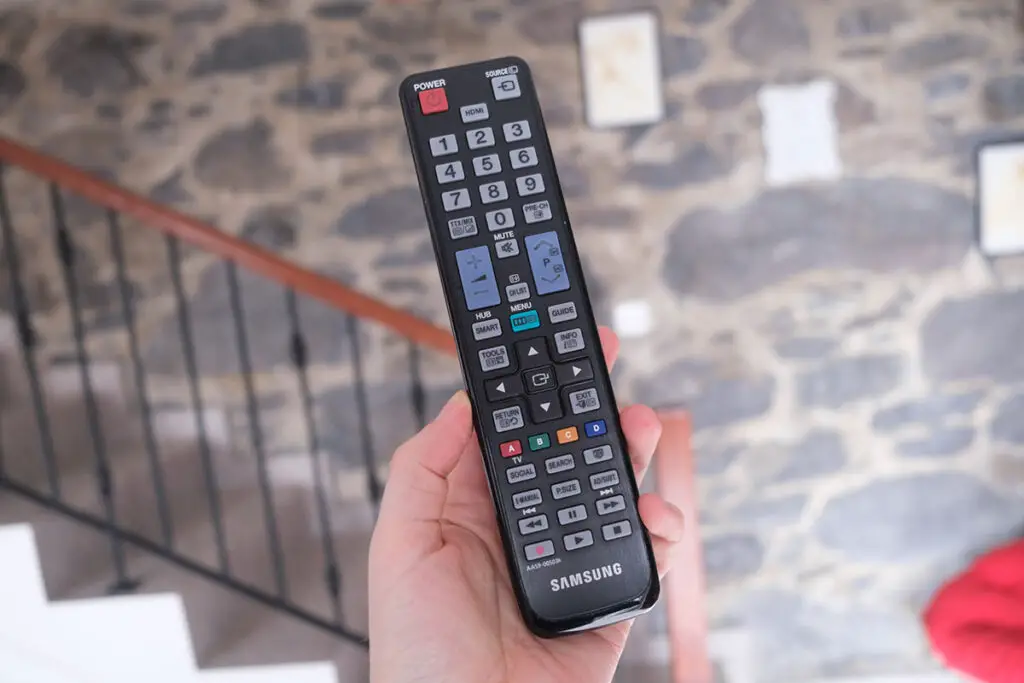
If you’re only looking to turn your Samsung TV Wifi on without the remote because your existing remote doesn’t seem to work, then try these tips to fix it:
- Check for dead batteries.
- Look for stuck buttons.
- Update your TV.
- Check the IR emitter works.
- Check your IR isn’t being blocked.
- Power cycle and factory reset your TV.
- Check for physical damage to your remote.
You can read more details on each of these points in my article on what to do if your Samsung remote doesn’t work, but my best tip is to remove the batteries, hold down the power button for 10 seconds to drain any residual power, then forcefully mash every button on the remote, slapping it against your palm a few times.
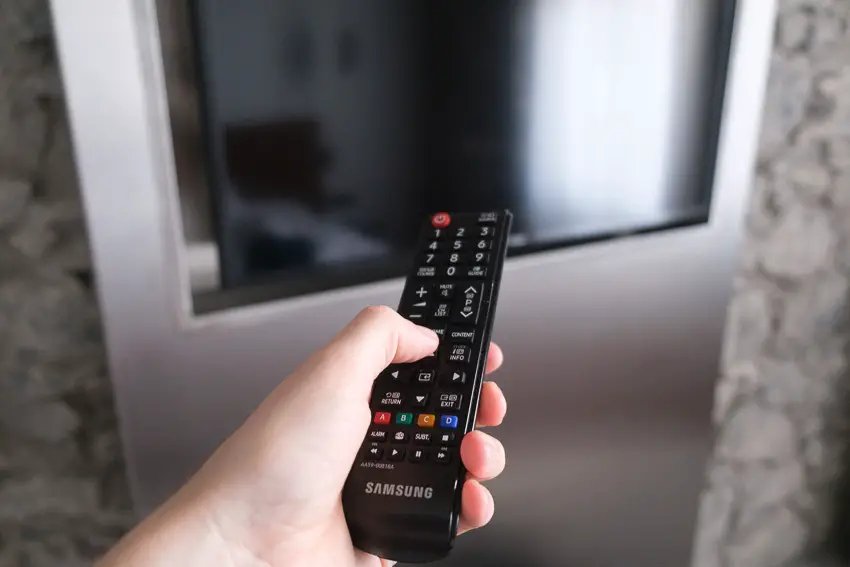
Over time, your remote’s buttons can begin to stick, and just like with a computer keyboard, there is a limit to how many simultaneous button pushes the remote will recognize.
So, one or more buttons stuck in the “on” position can prevent other buttons on the remote from working.
Typically, the volume button will stop working as this is one of the most used buttons and is therefore most susceptible to getting dirt stuck inside it, and this then stops the rest of the remote from working.
If your remote is damaged (if you have a dog that likes chewing things it shouldn’t), then Samsung remotes are simple to take apart and can usually be fixed at home in a couple of minutes, as shown in the video below for older style Samsung remotes and new Samsung smart remotes.
7. Get a New Samsung Remote
If you’ve lost your Samsung remote, then you can buy a generic replacement for a few dollars from all major retailers.
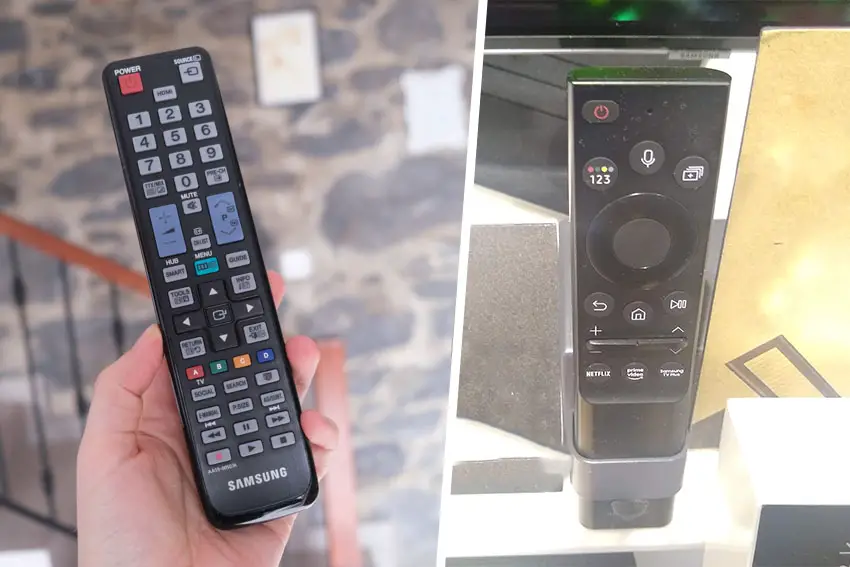
If you still have your remote, but it’s not working, then take a look at the article on how to fix your Samsung TV remote before consigning it to the trash.
Troubleshooting: No Wireless Networks on Samsung TV
If you are getting to the Wi-Fi networks page but cannot see any networks in the list, then simply unplug your TV for 5 minutes and when you plug it back in again the list will be populated. Power cycling your TV resets the Wi-Fi controller and lets it pick up your network again.
How to Connect Samsung TV to Phone Without Remote
You can connect your phone to your Samsung TV by using the SmartThings app, provided that your phone and TV are both on the same local network.
- Open the SmartThings app.
- Press Devices.
- Home.
- + and Add Devices.
- And Scan Nearby to find your TV.
Conclusion
- Use the physical buttons located underneath the IR sensor on the TV, usually in the middle or on the right-hand side to access your TV’s Wi-Fi menu.
- Download the SmartThings app to your phone, pair your phone and TV by using your phone’s hotspot, and then use the app to connect it to your new Wi-Fi network.
- Use the Mi Remote app to simulate an IR remote with your phone.
- Get a new generic remote for a few dollars.
- Try to fix your remote by taking it apart and cleaning the internal components.
I’m confident that these steps will get your TV connected to Wi-Fi without spending any money, although it is simplest to just buy a cheap generic remote.
If you need any further help, then I suggest contacting Samsung support directly or checking on YouTube where it’s much easier to see how to fix a remote, for example.
Read More:
Samsung TV remote not working, blinking red light?
Samsung TV remote not working?


![The Best Resolution for a 15 Inch Laptop [SOLVED]](https://www.lapseoftheshutter.com/wp-content/uploads/2022/08/best-resolution-for-15-inch-laptop-340x226.jpg)


Leave a Reply